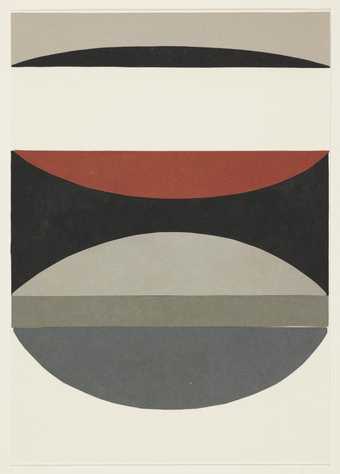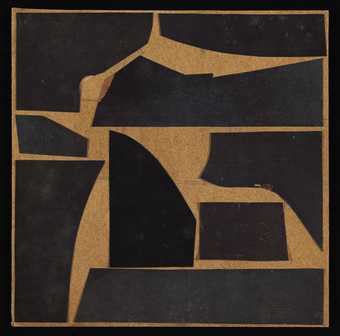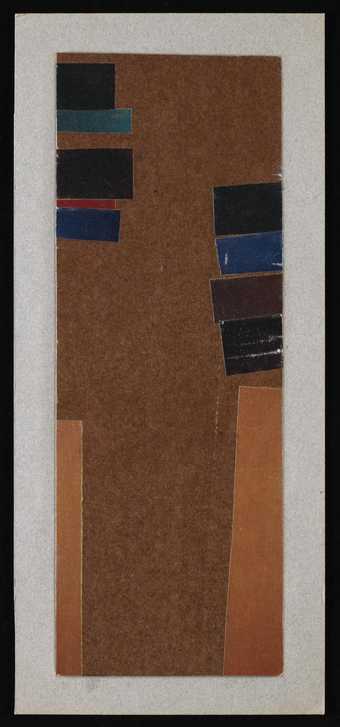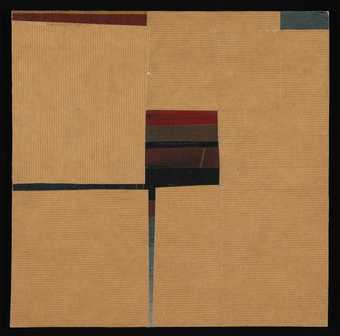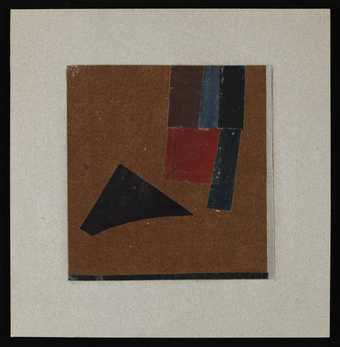Personal papers and artworks of Robert Adams
1925–87

A series of sketchbooks, collages, maquettes and a self-portrait have been selected from the Robert Adams collection and are available online. Together the material documents the wide range of Adams's practice over nearly forty years. The sketchbooks date from c.1944-80 and contain studies for a variety of artworks by Adams, such as the screen forms and 'Vertex' series of sculptures. The maquettes date from the 1950s to the 1970s and relate to the 'Vertex' and 'Cavetto' sculptures of the 1970s. The self-portrait dates from c.1946.
Details of the remainder of the collection can be found on the Archive catalogue.
- Collection Owner
- Robert Adams 1917–1984
- Collection
- Tate Archive
- Acquisition
- Presented by Mrs Pat Adams, widow of the artist, and her daughter Mrs Mary Adams Weatherhead, in 1984 and 1990.
- Reference
- TGA 8421
44 objects in this collection
- Title
- Untitled collages
- Description
- When he developed from abstraction to constructed abstract art in the early 1950s, Adams shared with his painter friends Victor Pasmore, Anthony Hill, Terry Frost and others, an interest in collage. They cut 'self-coloured' papers into basic shapes, triangle, semi-circle, rectangle, and with them built up compositions with constructed movement. Sometimes systems of proportion, such as the golden section, derived from theoreticians like Hambidge or Ghyka, were used. Adams showed twelve, unspecified collages at Gimpel Fils in March 1953 (numbers 21-32) and early in 1955 he showed two more at the exhibition 'Nine Abstract Artists' which have been identified with some certainty (numbers 4, 5, 'Moving Forms' and 'Descending Forms'). These two are composed of segments of circles, cut from coloured papers, which are tilted and rocked in relation to each other so that they form an apparently natural progression, like a shoal of leaves, across and down the sheet. He continued occasionally to work in collage and he last exhibited collages in a one-man exhibition in 1978 held at Gainsborough's House, Sudbury (numbers 20-23). Among a group of small, fragmentary, loose sheets of drawings (TGA 8421/1/20-29) in the Tate Archive are studies which relate to the two collages shown at 'Nine Abstract Artists'. On one of these sheets (TGA 8421/1/29) are studies for two of the undated collages in the Archive (TGA 8421/2/1 and 8421/2/2). These two are made from long, thin segments of circles, and rectangular slips, cut from card coloured grey, yellow, red, black and white. The pieces are numbered beneath. They were not tilted but measuring about 255 x 380 mm, so that the curves mirror each other and contrast with the straight edges. The small studies show the care Adams took to establish a rhythm across the composition. The supports of theses collages have been pinned up and are inscribed with numbers in their corners, so they were probably exhibited but when and where is unknown. The other five collages, also undated, have hardboard supports. Four of the panels are square, measuring about 280 x 280 mm, the fifth is about three times as high as it is long (TGA 8421/2/4, 376 x 135 mm). One of the square panels (TGA 8421/2/3) was probably never made up as a completed collage. Two pencil lines are ruled across it and with it are nine loose pieces of paper, cut into geometric shapes, from pages of a book or magazine, chosen for their very dark, glossy surface. The other panels are stuck over with rectangular pieces of self-coloured papers, brown, blue, red, green, black, maroon, yellow and grey. Their compositions are abstract and in this way, with their rectangular forms, are closer to the collages of Jean Arp and Sophie Taeuber made in 1918 than those of the Cubists of c.1912. A linocut dated 1952 has a related composition, with rectangles divided by clear, thin, straight, lines (see F. Carey and A Griffiths, 'Avant-garde British Printmaking 1914-1960', British Museum, 1990, colour plate number 88).
- Reference
- TGA 8421/2

